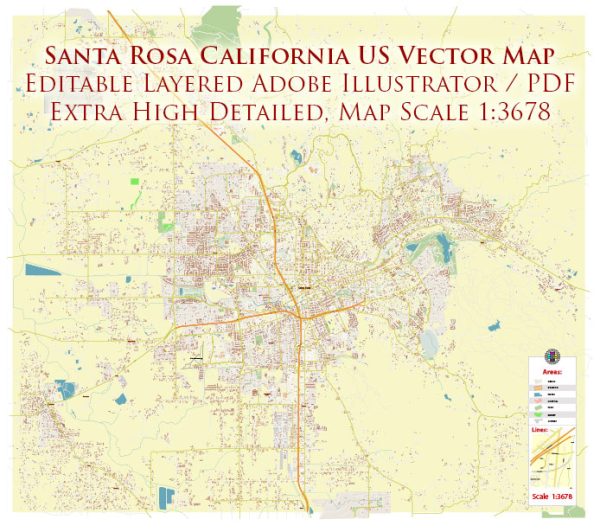Santa Rosa, located in Sonoma County, California, has a rich history of urban development that spans from its early settlement to its growth into a thriving city. Here’s an overview of the key phases in Santa Rosa’s urban development:
- Early Settlement and Mexican Era (1820s-1846): The area that would become Santa Rosa was originally inhabited by indigenous Pomo people. In the early 19th century, the region came under Mexican rule, and in 1833, the land was granted to María Carrillo as part of the Rancho Cabeza de Santa Rosa. The area remained largely agricultural during this period.
- American Era and California Statehood (1846-1850s): After the Mexican-American War and the Treaty of Guadalupe Hidalgo in 1848, California became part of the United States. The Gold Rush of 1849 attracted settlers to the region, including Santa Rosa. The city’s growth was initially slow, with a focus on agriculture and trade.
- Railroad Development (late 19th century): The arrival of the railroad in the late 19th century played a crucial role in Santa Rosa’s development. In 1870, the North Pacific Coast Railroad connected Santa Rosa to San Francisco, facilitating transportation of goods and people. This transportation link spurred economic growth and helped transform Santa Rosa into a regional hub.
- 1906 Earthquake and Rebuilding (early 20th century): The devastating earthquake in 1906 had a significant impact on Santa Rosa. Much of the downtown area was destroyed, but the city quickly rebuilt. The rebuilding process led to the establishment of a more modern cityscape with improved infrastructure and architecture.
- Mid-20th Century Growth and Suburbanization: After World War II, Santa Rosa experienced significant population growth and suburbanization. The expansion of the city was fueled by an increase in residential development, shopping centers, and infrastructure projects. This period marked a shift from the agrarian economy to a more diversified economy.
- Wine Industry Influence (late 20th century): The wine industry, which had been present in the region since the 19th century, became a major economic driver in the latter half of the 20th century. The nearby Sonoma and Napa valleys became renowned for their vineyards and wineries, contributing to Santa Rosa’s prosperity.
- Contemporary Development (21st century): In recent decades, Santa Rosa has continued to evolve as a dynamic urban center. The city has seen ongoing development projects, including the revitalization of downtown areas, the expansion of educational institutions, and efforts to enhance the quality of life for residents.
Throughout its history, Santa Rosa has balanced its agricultural roots with urban development, creating a diverse and vibrant community in the heart of Sonoma County. The city’s history is reflected in its architecture, cultural institutions, and the ongoing efforts to preserve its unique character while accommodating growth and change.


 Author: Kirill Shrayber, Ph.D.
Author: Kirill Shrayber, Ph.D.